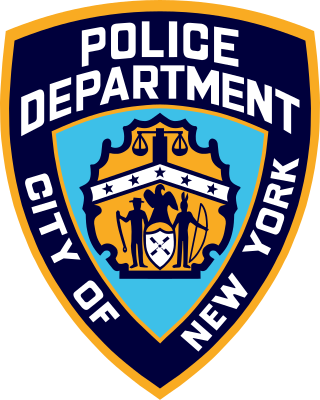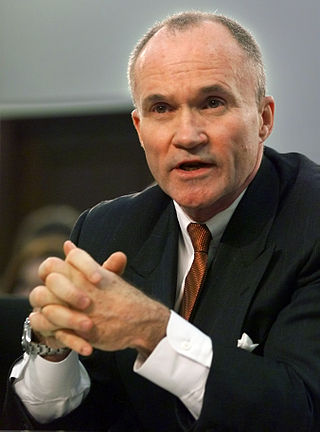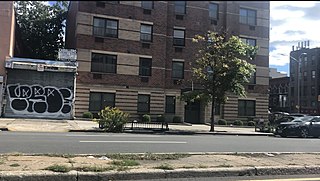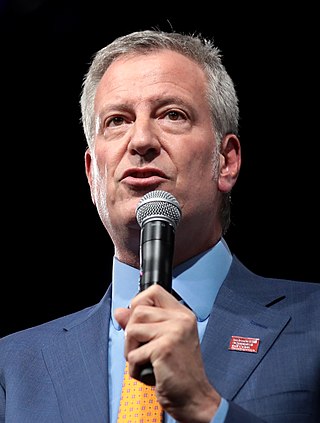Controversy regarding misuse and claims of racial profiling


New York police officer Adrian Schoolcraft made extensive recordings in 2008 and 2009, which documented orders from NYPD officials to search and arrest black people in the Bedford-Stuyvesant neighborhood. Schoolcraft, who brought accusations of misconduct to NYPD investigators, was transferred to a desk job and then involuntarily committed to a psychiatric hospital. In 2010, Schoolcraft sent his tapes to the Village Voice, which publicized them in a series of reports. Schoolcraft alleges that the NYPD has retaliated against him for exposing information about the stop-and-frisk policy. [12] [13] The New York Civil Liberties Union (NYCLU), LatinoJustice PRLDEF, and The Bronx Defenders filed a federal class action against this program. [14]
In response to allegations that the program unfairly targets African-American and Hispanic-American individuals, then-Mayor Michael Bloomberg stated that it is because African-Americans and Hispanic-Americans represent 90% of both perpetrators and victims of violent crime in the city. [15]
On June 17, 2012, several thousand people marched silently down Manhattan's Fifth Avenue from lower Harlem to Bloomberg's Upper East Side townhouse in protest of the stop-question-and-frisk policy. [16] The mayor refused to end the program, contending that the program reduces crime and saves lives. [17]
In early July 2012, stop-question-and-frisk protesters who videotaped police stops in New York City were targeted by police for their activism. A "wanted"-style poster hung in a police precinct headquarters, without any allegation of criminal activity, accused one couple of being "professional agitators" whose "purpose is to portray officers in a negative way and too [ sic ] deter officers from conducting their responsibilities." [18] Police officers later surveilled and recorded the exit of persons from a "stop stop-and-frisk" meeting held at the couple's residence, allegedly in response to an emergency call of loitering and trespass. [19]
In October 2012, The Nation published an obscenity-filled audio recording that revealed two NYPD officers conducting a hostile and racially charged stop-and-frisk of an innocent teenager from Harlem. Following its upload, the recording soon turned viral, as it triggered outrage and "shed unprecedented light" on the practice of stop-and-frisk. [20]
In June 2013, in an interview with WOR Radio, Michael Bloomberg responded to claims that the program disproportionately targeted minorities. Bloomberg argued that the data should be assessed based on murder suspects' descriptions and not the population as a whole. Bloomberg explained:
One newspaper and one news service, they just keep saying 'oh it's a disproportionate percentage of a particular ethnic group.' That may be, but it's not a disproportionate percentage of those who witnesses and victims describe as committing the [crime]. In that case, incidentally, I think we disproportionately stop whites too much and minorities too little. [21]
In February 2020, an audio recording surfaced of Michael Bloomberg defending the program at a February 2015 Aspen Institute event. In the speech, Bloomberg said:
Ninety-five percent of murders- murderers and murder victims fit one M.O. You can just take the description, Xerox it, and pass it out to all the cops. They are male, minorities, 16-25. That's true in New York, that's true in virtually every city (inaudible). And that's where the real crime is. You've got to get the guns out of the hands of people that are getting killed. So you want to spend the money on a lot of cops in the streets. Put those cops where the crime is, which means in minority neighborhoods. So one of the unintended consequences is people say, 'Oh my God, you are arresting kids for marijuana that are all minorities.' Yes, that's true. Why? Because we put all the cops in minority neighborhoods. Yes, that's true. Why do we do it? Because that's where all the crime is. And the way you get the guns out of the kids' hands is to throw them up against the wall and frisk them… And then they start… 'Oh I don't want to get caught.' So they don't bring the gun. They still have a gun, but they leave it at home. [22] [23] [24]
Class-action lawsuit brought by Center for Constitutional Rights
In Floyd v. City of New York , decided on August 12, 2013, US District Court Judge Shira Scheindlin ruled that stop-and-frisk had been used in an unconstitutional manner and directed the police to adopt a written policy to specify where such stops are authorized. [25] [26] [27] [28] Scheindlin appointed Peter L. Zimroth, a former chief lawyer for the City of New York, to oversee the program. [29] Mayor Bloomberg indicated that the city would appeal the ruling. [30] Scheindlin had denied pleas for a stay in her remediation of the policing policy, saying that "Ordering a stay now would send precisely the wrong signal. It would essentially confirm that the past practices... were justified and based on constitutional police practices. It would also send the message that reducing the number of stops is somehow dangerous to the residents of this city." [31]
On October 31, 2013, the United States Court of Appeals for the Second Circuit blocked the order requiring changes to the New York Police Department's stop-and-frisk program and removed Judge Shira Scheindlin from the case. [32] [33] [34] On November 9, 2013, the city asked a federal appeals court to vacate Scheindlin's orders. [35] [36] On November 22, 2013, the federal appellate court rejected the city's motion for a stay of the judge's orders. [37]
On July 30, 2014, Southern District Court Judge Analisa Torres denied the police unions' motions to intervene and granted the proposed modification of the District Court's August 2013 remedial decision. [34] [38] A week later, the City of New York filed a motion to withdraw its appeal. [38] On August 13, 2014, the Second Circuit announced the cases would be argued on October 15, 2014. [34] [39] On October 31, a three-judge panel on the Second Circuit unanimously ruled against the unions and allowed the city to proceed with its overhaul of the police department. [40]
Settlement of lawsuit and political ramifications
A record 685,724 stops were made under the program in 2011; however, the number of stops made has been reduced in every year since then. A major turning point was the 2013 court case Floyd v. City of New York and a subsequent NYPD mandate that requires officers to thoroughly justify the reason for making a stop. [41] In 2013, 191,558 stops were made. [3]
Stop-and-frisk was an issue in the 2013 mayoral election. The race to succeed Bloomberg was won by Democratic Party candidate Bill de Blasio, who had pledged to reform the stop-and-frisk program, called for new leadership at the NYPD, an inspector general, and a strong racial profiling bill. [42]
The number of stops continued to decrease over the next two years. In August 2014, Newsweek reported while stop-and-frisk numbers were down, they still happen disproportionately in New York City's African-American and Latino neighborhoods. [43] In 2015, only 22,565 stops were made. [44]
Class-action lawsuit brought by Bronx Defenders
On September 5, 2019, a New York judge granted class-action status to a case brought by The Bronx Defenders on behalf of individuals affected by stop-and-frisk. [45] The lawyers attest that records of individuals who underwent stop-and-frisk were retained by police, despite the law requiring that those records be sealed. [45] The arrestees had cases which were downgraded to non-criminal status, dropped, declined by prosecutors, or thrown out by court. [45] Despite this, personal information such as arrest reports, mugshots, details about appearance, and residential addresses remained in law enforcement databases. [45]
These records were used to increase the charges of individuals later arrested for unrelated crimes, and also continue to be used by the NYPD facial recognition database to track down suspects. [45]











